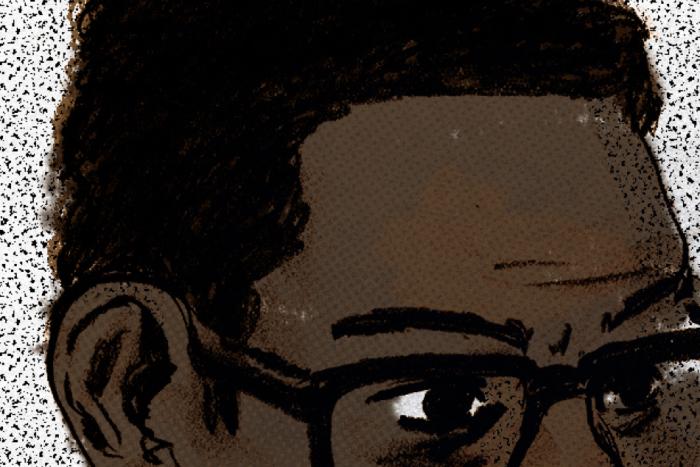
Illustration by Alex Schubert
What's in a face? This week, we invited ten writers to take part in a statuette-free celebration of what draws us to the people we can't stop watching. Read the whole series here.
Tom Cruise’s face is a national anthem. Think about it: for years, decades, if you wanted to sum up Hollywood, Scientology, glamor, you could just flash an image of Cruise, grinning like he knew something you didn’t, and nothing more had to be said. In that face, the white teeth like bleached bricks, the narrow eyes that squint when he smiles, the ball-peen hammer chin, that aerodynamic nose, was a whole system of fame, one that, if it didn’t start and end with Cruise, certainly hinged on him.
In 2015, Cruise is a fallen state, his once-sterling rep offed by the same stuff that made him intoxicating. It’s a pity, because he might be more intriguing now than he’s been since Eyes Wide Shut. No small part of his resurgence, at least in the eyes of film folks, has to do with 2014’s Edge of Tomorrow, which puts him in a familiar role: shit-eating military officer, on the surface a gold star, underneath a bit of a jerk. Cruise plays the part like he’s in a beauty contest, vamping, his eyes doing that thing they do where they vanish into his face. We saw the first traces of it in Risky Business, where it was cut with fawn-like naïveté; we saw it in full splendor with Jerry Maguire, one of our culture’s greatest case-studies in raw charisma. The premise of Edge of Tomorrow is that when Cruise’s character dies, he comes back to life at the beginning of the same day, and, rebirth after rebirth, must puzzle his way through the aliens attacking Earth. Cruise plays out his repeated death and resurrection wearing the look that Moses must’ve had on when God popped up in the burning bush: eyes lamp-like, lips spread like a jet engine.
When looking at Tom Cruise, it’s important to remember that this is one of the cultural touchstones you most have in common with the rest of the world. His face is a universal language, developed over dozens of movies, tweaked in tabloids and photographs. Once a thing has taken on that much symbolism, the substance of it becomes an afterthought. But each movie is a lesson in what we, the platonic Viewer, want from not only this man, but man in general. In Mission: Impossible, that was, and still is, zealot resolve, with humor as a twist, and none of the fussy British colonialism that comes with Bond, thank you—what even is a martini? In Born on the Fourth of July, it was the miscarriage of beauty that comes from war and its sicknesses. In Rain Man, it’s a goddamn masterpiece of hair, like something Picasso would’ve drawn as the mane of a horse, and also conceitedness boiled down into something like empathy, or at least a certain tolerance.
If Cruise’s face means less now, it’s only thanks to the attrition of time, the shifting winds of taste and fashion—nothing that you and I can’t comprehend. The difference is, you and I will die, and Tom Cruise’s face will live forever, immortalized in more places than you can count, born again and again and again and again and again.






